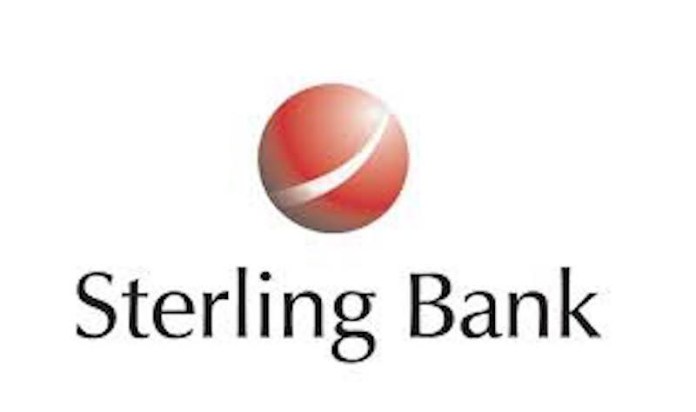
Environmental pollution. PHOTO: www.google.com
Giant manufacturing conglomerates should key into an extended producer responsibility plan aimed at protecting the environment and consumers, says VICTOR AMUSA, an environmentalist. He wants govt to implement incentive schemes like waste buybacks and encourage local recycling activities.
It was recently widely reported that Nigeria ranked 125 out of 137 economies in global competitiveness index according to the 2017-2018 report.
Nigeria moved up two positions in the rankings despite its score having fallen every year since 2012. In the same vein the IMF also predicted that Economic growth is expected to rise to 3.4 per cent in sub-Saharan Africa in 2018 from 2.6 per cent in 2017.
The measure of a country’s economy depends on the vibrancy of its gross domestic product, it is, therefore, the focus of any nation be it developed, developing or underdeveloped to encourage local manufacturing within its borders as this gives an assurance of viable trade and a strengthened economy.
The quest is to attract huge investments, create more jobs for the teeming unemployed population, jump-start the economy and help it maintain a balance that can earn accolades for the policies of government able to achieve such feat. However, industrialization also has its own attendant challenge and drawback especially as it concerns the environment and as such ultimately affects the health and well-being of the citizens.
Manufacturers are considered as the engine room of any serious nation’s economy; indeed, they are undisputedly a recognized force as most go all the way to even earn foreign exchange for their products and as such are key stakeholders to be considered during government policy formulations.
Developing countries constantly scout for investing industrialists who are able to turn around their economic woes by setting up huge manufacturing investments within their shores and help mop up the high population of skilled and unskilled labour saturating its social space, so they make sure they attain positive ratings in the ease of doing business index, this is achieved by governments especially of developing nations relaxing its rules and doing all they can to woo such huge investments like multinational manufacturing firms especially players in FMCG’s into their economy.
As commendable as such policies aimed at economy buoyancy is, it most times comes at a big cost to the environment. The huge turbines firing up but not without its emissions, the awesomely packaged products to attract consumers blistering in clean and crisp plastic sachets and the transparent plastic bottles showing how the content chills in the bottles but not without the attendant disposal concerns. Industrialization and indeed manufacturing comes with a price the environment constantly finds difficult to deal with.
Packaging is an integral part of manufacturing as it is even believed that about 70per cent of efforts spent at successful manufacturing goes into its packaging. Of course, all manufacturers want to appeal to consumers at the slightest opportunity.
The protection of manufactured products in a way that it gets to the consumer in the best condition using materials that ensure wholesomeness is simply called packaging. Some of the roles packaging play include storage, transporting and attracting sales. The most emphasized role is attracting sales as products especially fast-moving consumer goods have materials like labels and lids wrapped around them when such products get to the tables of the end consumers and as such has become an integral part of a product required for sales, this role is basically called primary packaging.
The indication, however is that if one million units of a product is manufactured, each has individual lid or label material wrapped around it to attract and inform consumers, the big question is what happens to these materials when the product is finally bought and used up by the final consumer as this translates to one million units of waste packaging materials asking to be disposed. Another role is in bundling together products into smaller sales units for easier transportation logistics, examples include corrugated cardboard boxes popularly called cartons, and shrink wraps which can be referred to as secondary packaging. It also means if one million units of products are subdivided into units of 12 pcs each we will have about 83,000 units of secondary waste packaging materials also seeking proper disposal methods.
At the bottom of the ladder is the packaging of the individual product as it reaches the end consumer through commercial sales points like markets, neighborhood stores and other channels where each product is packaged in materials like shopping bag that makes it easy for the consumer to take home. This aspect of packaging usually comes at no monetary cost to the consumer most times as its seen as very negligible.
Again, the indication is that if 1,000,000 units of products manufactured is purchased by 1,000,000 different consumers, one million presumably negligible consumer packaging like shopping bags is handed out and will as well seek disposal after the product is consumed.
Summarily, an indeed alarmingly 2,083,000 units of waste packaging materials are generated for every one million units of FMCG products delivered to the end consumer. Should the manufacturer roll out 30 million units of products monthly the number climbs to over 62 million units of waste packaging material readily poised to increase pollution if not properly managed.
Plastic packaging is sourced from crude oil which is a huge hydrocarbon, as a byproduct of a lot of processing in the petrochemical industry. It is believed that just a little amount of global crude oil production, say about 3per cent – 4per cent is used in plastic production, however, only a small unit of this percentage is used in the production of plastic packaging. Due to its easy modification and shaping tendency, in addition to high durability, plastic is widely fancied in the packaging division of the manufacturing sector.
Going down memory lane the use of plastics in packaging can be traced to sometime around the end of Second World War, it has become widely accepted and has gained increased momentum since the late 19th century as the industrial revolution is market conscious and consumer motivated. All industries are after manufacturing products that are well packaged to appeal to consumers hence the exponential use of plastic packaging in the Fast-Moving Consumer Goods division of manufacturing.
The use of non-recyclable materials in the production of packaging is unsafe for the environment, single-use plastic packaging must be recyclable and the society needs to be reoriented to understand the huge benefits of waste recycling especially plastic waste, one of which is staring down pollution and maintaining a healthy environment.
Most packaging waste if recyclable can be used as raw materials in other manufacturing sectors. Everyone has a role to play in mitigating climate change, we all need to know the implications of pollution and stop distorting nature’s balance through unwholesome human activities like waste burning and all acts of pollution.
The cost of pollution on the population outweighs any benefit manufacturing brings because the economy doesn’t thrive in isolation, the people and their well-being matter too. It is therefore imperative at this point in the development strata of the Nation to know that the environment is pivotal to a thriving economy, never again should the people be deceived to think there can ever be a growing economy without a robust and pollution free environment, manufacturers should take responsibility for the waste generated from every level of their manufacturing process, industries should work within regulated carbon emission policies and framework defined by the government to safeguard the environment.
With the positive indices of the recent economic growth of Nigeria, more manufacturing players are poised to make entry into the market while existing players will likewise expand their production base. Of course, that will further foster economy and comparatively influence GDP, however environmental laws should not be relaxed to woo investors in the manufacturing space, we can’t have a buoyant economy to the detriment of the Nations Environment and the population.
As a matter of urgent intervention to protect the environment, the agencies of government saddled with the responsibility of environmental protection and emission regulation should ensure manufacturers compliance with proper effluent treatment and reduced industrial carbon emissions. Manufacturers should take responsibility for their waste, especially their packaging waste as it forms a huge chunk of household waste daily generated. Materials used in packaging all fast-moving consumer goods must be recyclable and producers must be ready to take them back to rid environment of pollution of all sort.
A workable approach is to implement incentive schemes like waste buybacks and encourage local recycling activities by adopting or partnering with players in the local recycling space to mop up producers packaging waste. The sustainable angle to grow a nation’s GDP is to aim at actualizing a circular economy, wherein both growing and giant manufacturing conglomerates understands the role the environment plays in strengthening the economy and what is required of them to key into an extended producer responsibility plan aimed at protecting the environment and consumers alike.
• Amusa is the Chief Executive Officer, Vicfold Recyclers based in Kwara State.
– A Recycling Firm based in Ilorin Kwara State Nigeria, which Promotes Incentive Motivated Recycling.



